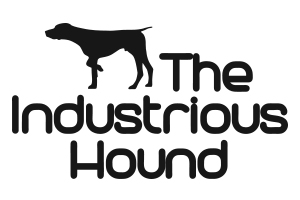My dog's afraid of...
Seeing a dog that is anxious and fearful is distressing. But have you made your dog afraid?
Some dogs cower and hide at the approach of a storm or the screams and bangs of fireworks, others at the sound of a passing motorbike or tram, others even at another dog in the park.
Yet why is this, when so many dogs are seemingly oblivious to the storm, motorbike tram or dog? What is so frightening about thunder or fireworks, or motorbikes or trams or dogs....? Well, nothing, of course!
In fact, many dogs are ambivalent about these events. Like us, dogs have different personalities, and different strengths and weaknesses. Some more likely to be nervous, others less.
But when things get tough, do we go to pieces and focus on an unhelpful, unnecessary and possibly irrational or harmful response, or do we take that information into account and support an alternative response?
Your dog’s behaviour didn’t happen over night, but with time, patience and consistent effort you can both begin to live free of fear.
The answer lies in how you behave, and how you react and communicate with your dog when they look to you for guidance.
The chain of events that leads to anxiety and fear
Like us, dogs may get a surprise when they hear a loud noise, like thunder or a loud engine, or are nervous in new situations. They look around to the rest of the pack to help them assess how to react.
Let’s imagine you have a young dog who has yet to experience his first passing motorbike. He is not born with a fear of that noise but it is outside his experience of the world so far.
The motorbike approaches. With the first loud roar, he flinches – it was loud and different. He might even be a little shocked and want to hide. He looks to other pack members to see if this new occurrence is safe and everyday, or threatening and dangerous.
Well-intended, you try to soothe the dog with a ‘there, there, don’t be afraid!’ You might stroke him or even pick him up.
But all the dog understands that all is not well and you are afraid. After all, if there were nothing to fear, other pack members would do nothing. What do you do when a leaf falls or when you pass a lamppost?
Now you think your dog is afraid of [insert random event]. You start to anticipate the dog’s behaviour as the [insert random event] approaches; the dog becomes more stressed as the event announces itself, and you reinforce the fear with your 'soothing' behaviour, or tightened lead, for example.
Take control of your pack
Your dog doesn't think he's human. He thinks you're a dog! Your job as a dog owner is to be the most effective and competent dog in the dynamic social structure.
When you have this role your dog can trust your judgement and relax, knowing another member of the group is in charge and knows what to do in new situations.
Learn to communicate in way that is meaningful for your dog, and adjust your behaviour and your interactions to allow your dog to let go of stress and anxiety.
Humans and dogs communicate differently.
You can quickly and effectively show your credentials when you set aside human ways of communicating and become aware of your own behaviour and its effect on your dog.
Humans can be verbal. Humans can explain and rationalise with each other. Humans can reason in a sophisticated way that is different from how dogs communicate.
Learn to communicate like your dog
But when humans project human thoughts and behaviours on their dogs, things go wrong.
Combining simple and practical techniques for effectively leading your pack can approximate how dogs communicate.
By approximating this language you can begin to eliminate the association between an event and a fearful response.
Create neutral or positive associations, and adjust your behaviour.
A DOG APPROACHES! The tram rumbles, the thunder cracks! The motorbike roars! Your dog may well flinch and look to you, or frantically bark...
The event was as eventful as bird song. Nothing to see here!
Learn how you reward without even knowing it.
Carry on as though nothing were happening. Nothing is happening! Walk around the house, make a cup of tea, read a magazine, don't tighten the lead, don't speak, keep walking along the street...
Ignore the bad, reward the good
You can begin to break the association between an event and a fear response by responding neutrally or positively when the event occurs.
Combined with adjusting your own behaviour, you can begin to associate loud noises with rewards. For example, at feeding times, you might clap your hands loudly once when you put food down, or drop a bin lid on concrete, or start the vacuum cleaner, for example.
That can be tricky with natural events, like thunder storms, for example, but if you are expecting storms, save feeding time for the first rumbles for example; or if trams or motorcycles are the problem, frequent a busy road where the event is more common.
Try offering a high value reward when the event occurs. But if your dog’s anxiety is high, he is unlikely to want to eat, so if he refuses the reward, that’s fine. A neutral response is as meaningful as a 'positive' response.
It can be tricky to undo your behaviour and disprove the dog's grounds for fear with neutral responses and positive associations with random or rare events.
If you need help unravelling this knot, get in touch!




